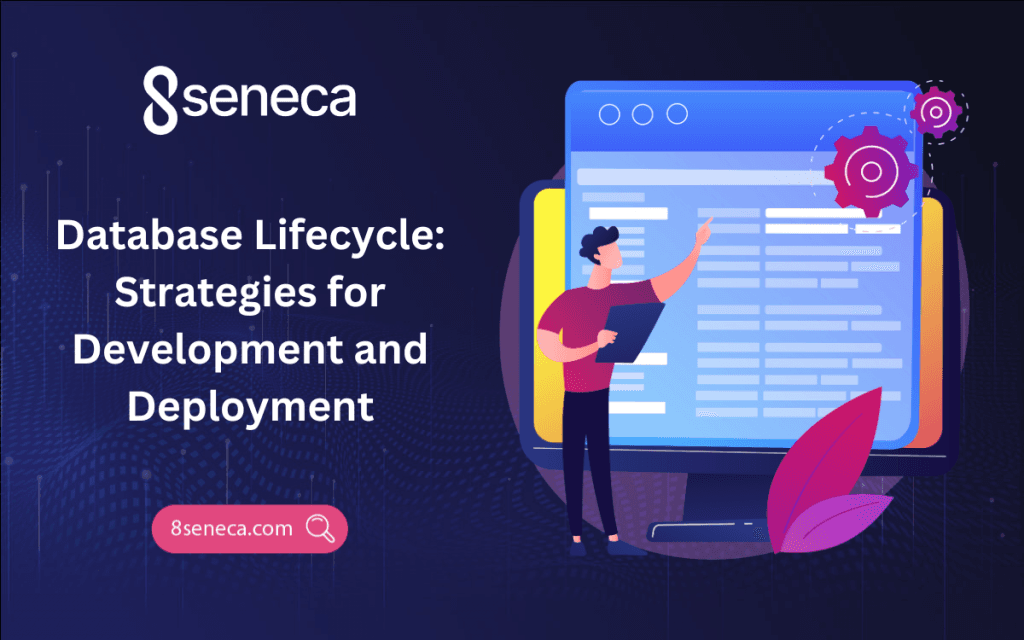Role of Healthcare Web Development in Modern Healthcare Systems
Discover how healthcare web development transforms modern healthcare. Explore its pivotal role in patient care & data management.
In today’s digital age, healthcare systems are undergoing revolution and healthcare web development plays a pivotal role in this evolution. With the increasing demand for accessible, efficient and patient-centric healthcare services, the integration of web development into healthcare systems has become more critical than ever. In this article, we’ll explore the significance and impact of healthcare web development in modern healthcare systems.
Understanding Healthcare Web Development
What is Healthcare Web Development?
Healthcare web development involves creating and maintaining websites, applications and online platforms. These platforms are designed to cater specifically to needs of healthcare providers, patients and other stakeholders in the healthcare industry.
Key Components of Healthcare Web Development
User-Friendly Interfaces
One of the most crucial aspects of medical web development is the creation of user-friendly interfaces. These interfaces are accurately designed to be intuitive to ensure that patients and healthcare professionals can effortlessly navigate the platform. Moreover, this intuitive design enhances user satisfaction and encourages engagement, which is vital in healthcare settings.
Data Security
Solid security measures are extremelt vital in healthcare web development to protect sensitive patient information. Furthermore, these security protocols go beyond standard web security and include encryption, access controls and regular security audits. The goal is to protect data against breaches effectively, maintaining patient privacy and trust.
Integration with Electronic Health Records (EHR)
Seamless integration with Electronic Health Records (EHR) systems is a cornerstone of healthcare web development. This integration enables real-time access to patient records. Therefore, it fosters accurate diagnoses and efficient treatment planning. It ensures that healthcare professionals have access to comprehensive patient information when making critical medical decisions.
Telehealth Capabilities
The advent of telehealth services has been accelerated by medical web development. These capabilities enable healthcare systems to offer virtual appointments and consultations, extending healthcare access to remote and underserved populations. Telehealth solutions include features such as video conferencing, secure messaging and remote monitoring. As a result, it provides patients with convenient and safe alternatives to in-person visits.
Mobile Accessibility
In an era dominated by mobile devices, healthcare web development ensures accessibility on various platforms including smartphones and tablets. This accessibility empowers patients to manage their health conveniently on the go. Mobile apps and responsive web designs make it easier for patients to schedule appointments, access health information and receive notifications. Thus, it promotes patient’s engagement and adherence to treatment plans.
Patient Portals
Healthcare web development often includes the creation of patient portals. These portals provide patients with secure access to their medical records, test results and appointment scheduling. Patient portals enhance patient engagement by allowing individuals to actively participate in their healthcare journey, review their medical history and communicate with their healthcare providers.
The Role of Healthcare Web Development
The role of healthcare web development has evolved significantly over the years, and it continues to shape the landscape of modern healthcare systems. Here are some of the key aspects that highlight its evolving role:
Accessibility and Patient Engagement
First and foremost, healthcare web development aims to enhance accessibility to healthcare services. Patients can now access medical information, schedule appointments and communicate with healthcare providers from the comfort of their homes. This level of accessibility fosters patient engagement as individuals actively participate in their healthcare journey, resulting in improved health outcomes.
Streamlined Administrative Processes
Moreover, healthcare web development streamlines administrative processes within healthcare organizations. Tasks such as appointment scheduling, billing and insurance claims processing are automated, reducing the administrative burden on healthcare providers. This efficiency allows healthcare professionals to focus more on patient care and less on paperwork.
Secure Data Management
In addition, the role of web development extends to secure data management. With the implementation of solid security measures including encryption and access controls, patient data is protected against breaches and unauthorized access. Maintaining the privacy and confidentiality of patient information is paramount in modern healthcare.
Telehealth Revolution
Notably, the COVID-19 pandemic accelerated the adoption of telehealth services, and healthcare web development played a pivotal role in enabling this shift. Telehealth capabilities, such as video consultations and remote monitoring, have become integral parts of modern healthcare systems. Patients can now receive medical care and consultations remotely, improving healthcare access and reducing the need for physical visits.
Mobile Accessibility and Responsive Design
Furthermore, as mobile devices dominate the digital landscape, healthcare web development ensures mobile accessibility through responsive design. Patients can access healthcare services and information on various devices, including smartphones and tablets. Mobile apps enhance the user experience, making it convenient for patients to manage their health on-the-go.
Interoperability and Data Exchange
In addition, interoperability is a key focus of medical web development. It enables different healthcare systems, devices, applications to communicate and exchange data seamlessly. This interoperability ensures that patient data flows smoothly across various platforms, reducing data silos and improving care coordination among healthcare providers.
Patient Empowerment
Last but not least, patient portals, an essential component of healthcare web development, empower patients to take an active role in their healthcare. These portals provide secure access to medical records, test results, and appointment scheduling. Patients can review their medical history, communicate with healthcare providers, and make informed decisions about their health.
The Impact on Healthcare Systems
The role of healthcare web development is not limited to mere technological advancement; it has notable impacts on entire healthcare systems. In this section, we will delve deeper into how healthcare web development reshapes the landscape of healthcare delivery, administration and patient outcomes.
Improved Access to Healthcare
One of the most profound impacts of healthcare web development is the democratization of healthcare access. Patients can now access medical services and information 24/7 through web development solutions. This fundamental shift ensures that individuals can seek medical advice and support whenever they need it, regardless of geographical constraints or time limitations.
The convenience of web-based healthcare services extends to remote and underserved populations, bridging the gap between urban and rural healthcare access. Patients in remote areas can now connect with healthcare providers, specialists, and resources that were previously inaccessible. This enhanced access is particularly crucial in emergencies, enabling timely medical consultations and interventions.
Cost Reduction
Efficiency and cost reduction are integral components of healthcare web development’s impact on healthcare systems. By automating administrative processes and reducing paperwork, web development solutions significantly contribute to cost reduction within medical organizations.
Appointment scheduling, billing and insurance claims processing are among the many administrative tasks streamlined by web development. Automated processes reduce the administrative burden on healthcare staff, allowing them to allocate more time and resources to direct patient care. This improved operational efficiency translates into reduced overhead costs and optimized resource allocation.
Furthermore, web-based systems enable healthcare organizations to minimize the use of physical infrastructure and paperwork, leading to substantial cost savings. The need for large administrative offices, extensive paper documentation and manual data entry is progressively diminished. These cost-saving measures improve the financial sustainability of healthcare systems, enabling them to allocate resources more effectively to where they are needed most: patient care.
Enhanced Communication
Communication lies at the heart of effective healthcare delivery, and healthcare web development fosters better communication between patients and healthcare providers. Patients can now conveniently interact with their healthcare teams, ask questions, request appointments, and receive timely updates through web-based platforms.
Secure messaging systems integrated into healthcare websites and applications allow patients to communicate with their healthcare providers in a confidential and efficient manner. Patients can seek clarifications, report symptoms, and receive medical guidance promptly, promoting transparency and trust in the healthcare system.
Moreover, web development facilitates real-time access to test results and medical records. Patients no longer need to wait for physical copies or phone calls to receive critical information about their health. Immediate access to such data empowers patients to make informed decisions about their health and participate actively in their healthcare journey.
Conclusion
In conclusion, healthcare web development plays a crucial role in modern healthcare systems by enhancing patient engagement, streamlining administrative processes, facilitating telehealth services. It has a profound impact on improving access to healthcare, reducing costs, enhancing communication. As medical continues to evolve, web development will remain at the forefront of innovation in delivering quality care to patients.
8seneca is dedicated to delivering B2B services, particularly focusing on IT outsourcing solutions that improve collaboration and bolster international team expansion. If you need IT outsourcing services, please don’t hesitate to contact us. Furthermore, we are actively seeking skilled .Net Developers to join our team. You can find job specifics and other career prospects within our company here.
Related Articles

Dec 09, 2024
Read more
What is Cross-platform Mobile Development?
Learn what cross-platform mobile development is, its benefits, challenges, and popular frameworks like Flutter, React Native, and Xamarin.

Dec 06, 2024
Read more
The Leadership Factor: Why Strong Leaders Make Successful Projects
Discover how effective leadership drives project success with strategies to inspire teams, tackle challenges, and achieve goals.

Oct 29, 2024
Read more
Database Lifecycle: Strategies for Development and Deployment
Learn the key stages of the database lifecycle—Planning, Analysis, Design, Implementation, Testing, Deployment, and Maintenance

Sep 30, 2024
Read more
Building a Data Warehouse: A step-by-step guide
Learn the key components, best practices, challenges of building and maintaining a data warehouse, and how it can drive better business.

Sep 17, 2024
Read more
How to Create Top B2B SaaS Product and Features Pages
Explore key elements and examples of B2B SaaS product pages to boost conversions and showcase your product's value.

Sep 13, 2024
Read more
The Role of Mobile Data Analytics in App Development
Discover how mobile data analytics improves app development by enhancing user engagement, boosting retention, and optimizing performance.
